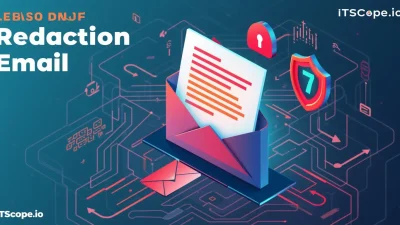Have you ever hit send on a parent email, only to wonder if it disappeared into the void of unread messages? You’re not alone! Crafting effective parent emails is a crucial skill that can enhance communication and foster stronger relationships between educators and families. In this guide, we’ll delve into the art and science of writing parent emails that not only get opened but also resonate and engage. Whether you’re an educator aiming to bridge the gap with parents or a school administrator looking to boost parental involvement, mastering this communication tool is essential. Let’s explore how you can transform your emails from ignored to impactful.
In today’s guide, we’ll cover everything from understanding your audience to structuring your message for clarity and engagement. Ready to elevate your email game? Here’s what to expect:
Table of Contents
- Understanding Your Audience: Parents’ Expectations and Preferences
- Crafting the Perfect Subject Line: Ensuring Your Email Gets Opened
- Structuring Your Email for Clarity and Engagement
- Using Tone and Language to Build Trust with Parents
- Common Mistakes to Avoid in Parent Emails
- FAQs
Understanding Your Audience: Parents’ Expectations and Preferences
Ever ponder what captures a parent’s attention in their inbox? Writing parent emails that truly engage revolves around understanding their unique expectations. In today’s fast-paced digital world, parents look for clarity, relevance, and value in communications involving their children. By aligning with these preferences, you craft messages that speak directly to them.
But what do parents really expect? Let’s uncover the key aspects:
- Clarity and Simplicity: Parents appreciate emails that are concise and to the point. They often juggle multiple responsibilities, so helping them grasp the essentials quickly is crucial.
- Relevance: Your emails should directly relate to their child’s learning or extracurricular activities. Personalizing content based on specific needs or interests increases engagement.
- Value-Added Information: Including tips for at-home support or insight into their child’s progress adds considerable value to your emails.
- Interactive Elements: Encouraging replies or including a call-to-action fosters a sense of community and communication. Ask a simple question like, “What resources have you found helpful?” to invite interaction.
Common Tools for Effective Parent Emails
When creating effective parent emails, tools like CRM systems and feedback forms can help tailor your communication strategy. These tools enable segmentation and personalization, ensuring the right message reaches the right audience.
Segmented emails see a 14% higher open rate.
| Tool | Purpose |
|---|---|
| Email CRM | Utilizes data to personalize email content. |
| Feedback Forms | Collects parents’ opinions for future improvements. |
| Automation Software | Ensures timely delivery and follow-ups. |
By understanding the pulse of parental expectations, your parent emails can become powerful tools for engagement and collaboration. It’s not just about conveying information; it’s about building a bridge for effective communication and trust.
Crafting the Perfect Subject Line: Ensuring Your Email Gets Opened
Why is the subject line so crucial? It’s your email’s first impression, and in the noisy world of overflowing inboxes, it decides whether your parent emails get opened or ignored. Let’s dive into creating compelling subject lines that captivate attention and ensure engagement.
-
Know Your Audience
If you want parents to open your email, speak their language. Reflect the tone and content they find intriguing. Consider the issues they’re concerned about, and address those directly in your subject line. For instance, the subject “How To Support Your Child’s Homework Routine” directly ties into their interests.
-
Keep It Short and Sweet
Most email clients truncate subject lines beyond 50-60 characters. Focus on conveying essential information concisely. Punchy lines like “Upcoming Parent-Teacher Conference” keep parents informed while urging a quick glimpse inside the email.
-
Personalize with Value
Adding a personal touch can significantly increase open rates. Utilize the recipient’s name or specific class details. “John’s Upcoming Science Project” speaks directly to the parent, fostering a sense of importance.
-
Test and Refine
A/B testing subject lines can provide incredible insights. Experiment to see which styles capture more opens. Data shines a light on preferences and helps refine future strategies.
Tip: Think of your subject line as a tiny promise to your reader. Ensure clarity and relevancy to maintain trust.
Insert Table Here: A comparison table of subject line open rates before and after personalization efforts.
Structuring Your Email for Clarity and Engagement
Crafting effective parent emails requires a thoughtful approach to structure and clarity. In this guide, we’ll explore key strategies to ensure your emails resonate and generate the desired response. Let’s dive into the steps needed to transform your communication!
- Start with a Compelling Subject Line: It’s the first thing parents see, and it should immediately capture their attention. Use clear, concise language that hints at the email’s value. For example, “Exciting Updates on Your Child’s Progress!” sets an engaging tone right from the get-go.
- Write a Warm Greeting: Begin with a friendly introduction. A simple, “Dear Parents,” or using their name if possible, creates a personal connection and fosters a welcoming atmosphere.
- Craft Concise Content: Parents are busy; make your message succinct. Present your main idea early in the body and support it with necessary details. Bullet points are a great tool for organizing key points succinctly, increasing readability.
- Include a Call to Action (CTA): Guide parents on what to do next—whether it’s to reply, attend an event, or fill out a form. For instance, “Click here to RSVP for the upcoming parent-teacher meeting” is direct and actionable.
- Conclude with a Friendly Sign-off: End your emails with a personal touch, using phrases like “Looking forward to your response” or “Warm regards.” This reaffirms the friendly nature of the email, leaving a positive impression.
Using Visuals and Bold Text
Visuals can significantly enhance parent emails. Consider embedding relevant images or graphics to illustrate key points without overwhelming the content. Meanwhile, sparingly use bold text to emphasize crucial information, drawing attention where it’s needed most.
Key benefit of using visuals: They enhance understanding and keep parents engaged, making your message memorable.
Using Tone and Language to Build Trust with Parents
Effective communication in parent emails is crucial for building trust and understanding. Your tone sets the stage and can transform a simple message into an engaging conversation. But how do you strike the right balance? Let’s dive in.
- Be Empathetic: Understand parents’ concerns. Start by addressing their needs directly. Phrases like ‘We understand your worries…’ can open doors to trust.
- Use Positive Language: Words influence feelings. Swap negative phrasing with positive alternatives. Instead of saying “The issue is…,” opt for “We have solutions for…”
- Keep it Concise: Parents are busy. Respect their time with clear and straightforward messages. Structure your email with short paragraphs and bullet points for easy reading.
- Be Professional Yet Friendly: Maintain a professional demeanor while being relatable. Use a warm, inviting tone that says, “We’re in this together.”
- Include Actionable Steps: Guide parents with simple instructions they can follow. Statements like “Feel free to reach out if…” empower parents to stay involved.
Creating trust with parent emails isn’t about complexity; it’s about connecting on a personal level.
Question for Readers: Have you noticed a difference in response when using a friendly versus a formal tone in your emails? Understanding the impact of your voice is key. An engaging tone not only builds trust but fosters long-term cooperation, ensuring that your messages are both heard and welcomed.
Common Mistakes to Avoid in Parent Emails
Crafting the perfect parent emails can feel overwhelming, but avoiding common pitfalls will make your messages shine. Let’s explore key mistakes and how to steer clear of them.
-
Being Too Formal: Parents appreciate clear, friendly communication. Avoid jargon and keep your tone conversational, like chatting with a friend over coffee.
-
Overloading with Information: Don’t bombard parents with too much at once. Prioritize vital details and break down complex topics into digestible sections.
-
Lack of Personalization: Address parents directly, and if possible, personalize content to reflect their child’s specific achievements or needs.
-
Ignoring Feedback: Always keep channels open for questions or feedback. An engaged parent is more likely to support educational efforts.
By avoiding these pitfalls in parent emails, you foster a supportive, informed community. Remember, the goal is to build bridges, not barriers, with your communication.
| Mistake | Solution |
|---|---|
| Too Formal | Use a friendly tone |
| Information Overload | Prioritize key details |
| No Personalization | Add personal touches |
| Ignoring Feedback | Invite responses |
FAQs
What is the best time to send parent emails?
The best time to send parent emails is generally in the early evening or late afternoon. This timing ensures the message isn’t buried under work emails and can be read during quieter moments at home.
How long should parent emails be?
Keep parent emails concise and to the point. Aim for around 200-300 words to communicate essential information without overwhelming the reader.



